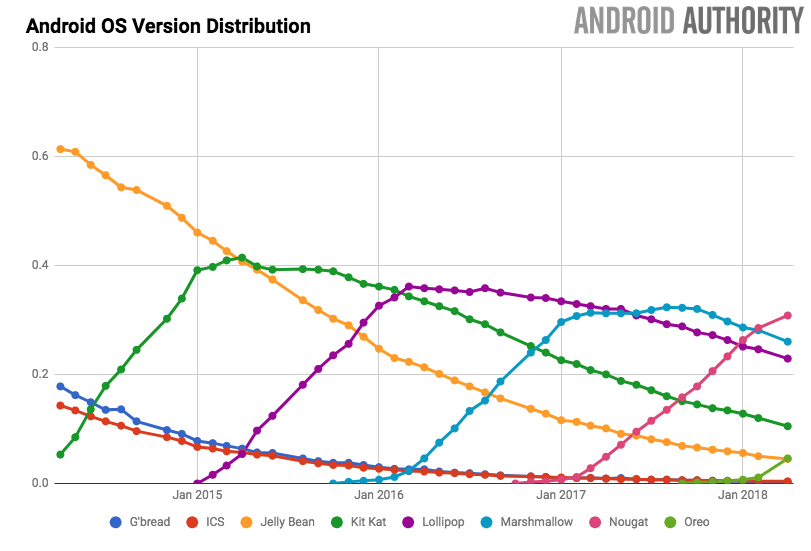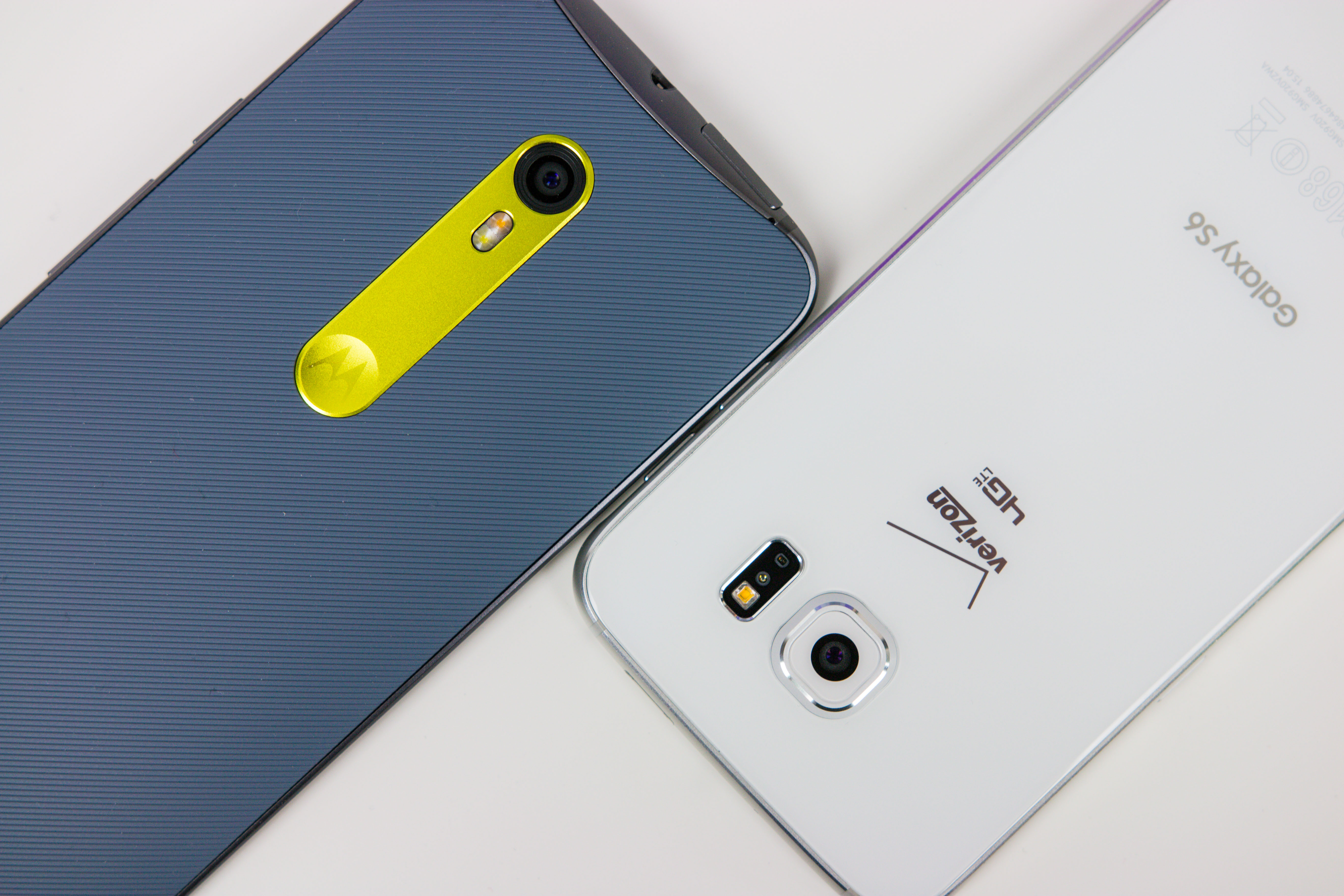
- Android Oreo installations jumped a full percentage point in one month's time, from 4.6 percent to 5.7 percent.
- Other than Android 7.1 Nougat, all other versions of the operating system's distribution numbers went down or stayed the same.
- Over three-quarters of Android users are now on Lollipop or later.
The newest batch of Android distribution numbers of 2018 are in, and Android Oreo (both 8.0 and 8.1) is now installed on 5.7 percent of all Android devices! That represents an increase of more than a whole percentage point in just under 30 days time.
Judging by Google's official statistics, Android distribution numbers are heading in the right direction — Oreo and Android 7.1 Nougat saw a rise in installs, while every other operating system version saw a decline or stayed the same.
The biggest news is Oreo's install numbers increasing from 4.6 percent in mid-April to 5.7 percent in early May. That's a huge jump for such a short period of time, and we'll likely see another big jump next month as companies push Oreo to more and more devices.
Android 7.1 Nougat also saw a slight increase of 0.4 percent this month, while Android 7.0 Nougat actually dropped by 0.1 percent. That means Nougat upgrades are rolling out, as 7.1 starts to steal from 7.0.
All other Android versions saw a decrease this month, or simply stayed the same. Marshmallow is down to 25.5 percent from 26 percent, Lollipop is down to 22.4 percent from 22.9 percent, and KitKat is down to 10.3 percent from 10.5 percent. Jelly Bean is down to 4.3 percent from April's 4.5 percent, and Ice Cream Sandwich and Gingerbread both are at 0.4 percent and 0.3 percent, respectively, which represents no change from last month.
While we expected Oreo's distribution numbers to increase over the past 30 days, a full percentage point jump is pretty amazing. The fact that well over three-quarters of Android devices are now on Lollipop or later is terrific news, as devices on older operating systems are much more vulnerable to security threats.
Does this mark a turn for Android?
From KitKat, to Lollipop, to Marshmallow, and to Nougat, each new version of Android seemed to hit fewer devices and do so in a slower fashion (see the chart below). However, with this significant increase in Oreo numbers after only one month in mind, could it be that Google has finally lit a fire when it comes to OEM's issuing more timely updates to devices?
However, we also know that people are holding onto their phones for longer periods of time, which means the number of active devices running older versions of Android stays high. As the price of flagship phones continues to rise, this could slow the rate of Android adoption rate even further as fewer and fewer devices with old software versions stay in service.
Furthermore, there are still Android devices launching without the latest version of Android out of the box, attributable to the rise of lower-cost Chinese devices and increased market growth in developing countries.

However, the increased rate of release for major Android versions may be one of the big reasons for the shape of the graph above. Jelly Bean was out for about 16 months before KitKat arrived. KitKat stuck around for slightly over a year followed by Lollipop which just scraped past 11 months before Marshmallow hit the scene. Then Marshmallow was only out for ten and a half months before Nougat showed up in mid-August. Oreo is the only software version to buck the trend, releasing almost a year to the day after Nougat. Shorter OS version shelf lives equal lower market penetration.
The other key factor here is that each new Android version arrives with more Android devices in circulation, meaning its immediate impact is decreasing. When all of the major OEMs got their flagships up and running with Ice Cream Sandwich, it represented a significant share of Android phones because there were far fewer of them. There are more than two billion monthly active Android devices in use now, so there is simply more ground for the latest Android version to cover.
Being on the latest version of Android isn't as important as it once was, though. With Play Services, for instance, Google can push out important updates to just about every Android device without the need to bake it into Android (thus requiring an entire software update). Plus, a good amount of OEMs have been focusing on rolling out the latest Android security patches to their devices, which means Android phones aren't as vulnerable to attacks as they once were.
from Android Authority https://ift.tt/2hJnnh4
via IFTTT



No comments:
Post a Comment